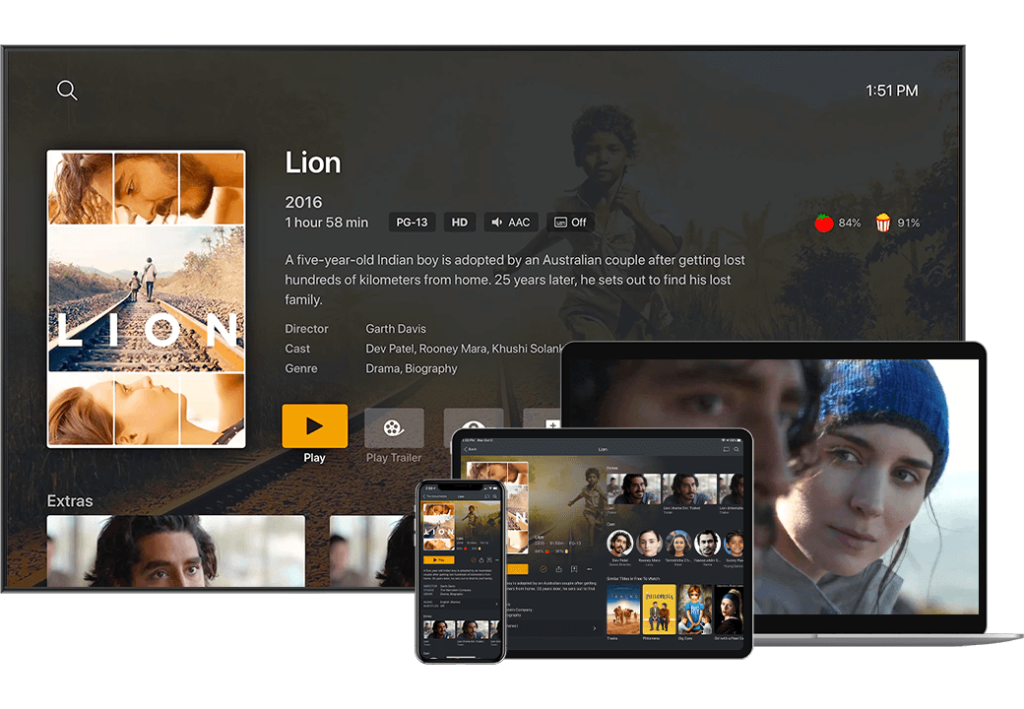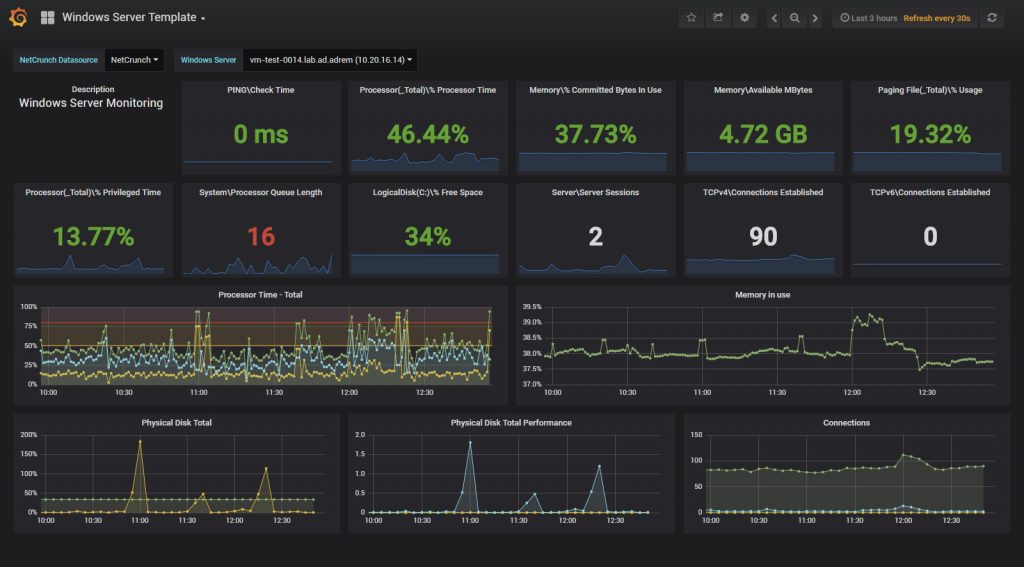Are you looking for a central place to store all your pictures and movies? Or do you want a place to learn new IT skills? And what about your smart home? A home server can be used in many different scenarios and can be a great addition to your home network.
When we talk about a home server most people are concerned about the power consumption, or noise that it makes. But that is really no need for that. These days you can build your own home server for around $500 that consumes only 10 watts when running idle.
In this article, we are going to take a look at where you can use a home server for, and what you need to build your own server or the options to buy one.
In this article
What is a home server?
When we talk about a home server we are not necessarily talking about a big enterprise-grade server that you use at home. A home server can be any computing device that is used for central (cloud) storage, backups, serving media files, surveillance, etc in a home environment.
Most people use a home server to play media files on their TV or use it as a central storage device for all household members. The advantage of centrally storing your files is that everyone in the household can access them. Also, you only need to back up a single device and don’t need to pay a monthly subscription for cloud storage.
IT Pro’s often use a home server to train their IT skills. If you are working in IT you may want to test scripts or programs in a safe non-production environment. A homelab server is a perfect solution for this. It gives you the ability to deploy VMs, and create a small network/domain to test and learn new skills.
Home Server Uses
A home server can be used for many different tasks. I already mentioned a couple of ideas, but let’s take a deeper look at the different functions for a server at home. We will start with the most common use cases.
Central storage with a Home Cloud Server
Files are getting bigger and bigger, and we all want to keep our photos, videos, and other files as long as possible. When you have a server at home then it makes perfect sense to centrally store your data on the server.
The problem in every household is that data is scattered over different computers and external drives. By consolidating them into one location on a home file server, everybody can easily access the files, and you can better protect your data.
When you store all your data centrally in one place, make sure you have a good backup of that data. A RAID solution alone isn’t a backup, make sure you keep a copy of the data on an external device.
One of the advantages of cloud storage is that you can access your data from anywhere in the world, even from your mobile phone. With a home cloud server, you can get the same features as with other cloud solutions, only based on your own storage.
There are a couple of advantages when it comes to running a local file server compare to using a cloud solution:
- Speed – You can access your files blazing fast over your local network (no need to download them first)
- Privacy – Nobody is sniffing through your files
- Security – Full control over who accesses your data
There are different solutions available for storing data centrally. If you are using a Synology NAS then you can use the built-in features to make network shares and access your data remotely. Other good options to make a home cloud server are:
Home Media Server
The most common use case for a home server is to use it for streaming media. With a home media server, you can watch movies directly on your Smart TV, mobile phone, or computer from your own library. Besides movies, you can also stream music from your home media server.

There are different solutions for creating your own home media server, but the popular onces are:
Getting started with your Home Media Server is really simple. Install the software of your choice and add your library with movies to it. Plex made it really easy to stream media, they have apps available for pretty much every device on the market, inc Chromecast, Roku, Apple TV, etc.
Central Backup Solution
Making frequent backups of your files is important. Hard drives may fail, files can get accidentally deleted, or ransomware can encrypt all your files. They are all common things that can happen to anybody.
Software can be re-installed, but family or holiday pictures can’t be retaken. So it’s really important that you make a backup of your computer on a daily or weekly basis.
Making backups should not be a manual task. It gets forgotten and you will always see that something happens when you haven’t taken a recent backup.
If you have a home server then you can automate the backup of your computers. This way you are assured that your data is safely backed up on a regular basis. Again, there are different solutions available, but a couple of good ones are:
Home Automation Platform
I love creating a smart home, and I have written a lot about it, including this list with smart home ideas. When you want to create a smart home you will need a central place to manage your smart home devices.
You could buy a dedicated smart home hub, like a Homey, which may have some advantages. But if you have a server available then you can also install your own Home Automation Platform.
A good solution is for example Home Assistant. You can install it on pretty much any platform that you want to use and it’s well-documented. Other home automation solutions that you can take a look at are:
Home Security System
Besides home automation, we also have home security. Network cameras are really affordable these days and offer good recording quality. Making them perfect to secure your home and keep an eye out on your driveway for example.
Now I am a big fan of Ubiquiti, so personally, I have a full Unifi Protect system, which you can read more about here. But for your home server, there are a couple of different options available. Among does is Blue Iris, which is really a great product (still want to incorporate it into my network as well).
Blue Iris supports motion and audio triggering and can be used to extend easily with add-ons like license plate recognizing for example.
Password Manager
It’s important to use a unique and strong password for every account that you have, to secure your online identity. The only way to do this is by using a password manager.
When you have a home server then it’s really easy to run your own password manager and make it available to every member of your household.
Bitwarden is an open-source password manager that you can install on your own server at home using a Docker container. You can find the complete install guide here.
Hosting your own website
You can also use your server to host your own blog or website. Hosting isn’t really expensive these days, but if you have a small website and like to learn how a web server works, then you can run it perfectly from home.
Keep in mind that you will need a decent internet connection. Mainly the upload speed of your internet connection is important to run a website.
For example, Nginx in a Docker container or Xampp are great ways to get started.
Run your own Home Gaming Server
Online games are popular and some games allow you to host your own gaming server. Running the gaming server on your home server will increase performance and stability. It also allows you to customize the gameplay.
When you are hosting your own game then the upload speed of your internet connection is important. Make sure you have enough bandwidth available.
Monitoring
When you have a server running 24/7 then you have a great opportunity to start monitoring your network or smart home. PRTG offers a free version that can be used to monitor your home network, think of monitoring used bandwidth, CPU/memory usages, free space, etc.
If have written an extensive article about monitoring your home network you can find it here.

Besides your home network, you can also use the server the monitor your house. Most Smart Home sensors can monitor things like temperature, humidity, power consumption, etc. If you pull all this data into a nice Grafana dashboard you will get some great insights.
I also use my home server to monitor my car (battery level, consumption, location) and report it all back, including the weather, to ABRP.
Homelab Server
Having your own server is a great way to learn new IT skills. A homelab server gives you the ability to test new programs, learn how to install VMs, and manage Windows or Linux servers without risking any data loss.
You can use a hypervisor, like Vmware or Hyper-V to easily deploy servers and create a small network to play with. If you want to get started with Hyper-V, then make sure your read this guide on how to install and configure Hyper-V.
Building a Home Server
There are a couple of options when it comes to building your own home server. You could buy an old enterprise-grade server on eBay, like this Hp DL360. These kinds of servers often have enough RAM, grade processing power, and support RAID configurations.
The downside of these servers is that they make a lot of noise and use a significant amount of power. You can however replace the fans with quiet models, like those from Noctua.
But for most home server configurations, these kinds of models are a bit overrated. An old laptop or desktop, however, is a great way to get started.
If you want to build your own home server then there are a couple of things that you need to consider:
- Required storage capacity
- Power Consumption
- Mounting options (rack or not)
Low Power Home Server
I have put together a part list to build your own low-power home server. In idle it should consume around 10 watts and with a couple of servers running around 20 watts. Hard drivers consume the most power, so the more you add the higher the consumption.
| Component | Products |
|---|---|
| CPU | Intel Core i3-9100 |
| Motherboard | Fujitsu D3643-H |
| Memory | Samsung M391A2K43BB1-CTD |
| PSU | Mini-box PicoPSU-160-XT |
| External PSU | LEDwholesalers 12V 20A 240W AC/DC Power |
| Case | Fractal Design Core 1000 USB |
| SSD | Intel 660p NVMe |
| HDD | Seagate BarraCuda 2TB |
Note
I have created an updated article on building your own home server, with a complete build guide, two configuration examples and optimization guide.
Processor
A home server doesn’t really need much computing power, even an Intel G5400 is more than enough for most use cases. But the I3 doesn’t cost much more, also has lower power consumption, and gives you that little bit extra in case you do need it.
The ARCTIC Alpine 12 Passive is an excellent cooler for the Intel I3.
Motherboard
Choosing the right motherboard can really help in lowering the power consumption of your server. The Fujitsu motherboard is really energy efficient which is achieved by disabling features that it doesn’t need.
The downside of this motherboard is that they are hard to find and quite expensive. There are different models in the market, The D364x-B line comes with 6 SATA connections, and the -H line with 4 SATA connections.
Another good option for the motherboard is the ASRock B360M-HDV.
Memory
If you are using only docker images then you don’t need a lot of memory. 8 GB would be more than enough in those cases.
Try to stick with one memory module, because each module increases memory consumption.
Power Supply
The picoPSU’s are really efficient power supply for building a low-power home server. I have listed the 160W version, but the 90 watt version should also be enough with the I3-9100.
You will need to use an external power adapter with the picoPSU, as listed above.
SSD and Storage Disks
SSDs are really great to use as a boot disk and to install your servers and applications on. The NVMe SSD has a slightly higher energy consumption than normal SSDs, but this way we can use the 4 SATA slots for the storage disk.
The Intel and Samsung SSDs have the lowest power consumption. I have listed a 500GB version, which should be more than enough to run your servers.
For storage, we use normal spindle disks. The advantage of the 2.5-inch hard drives is that they use way less power than the 3.5-inch models.
Alternatives
If you don’t want to build a home server completely from scratch then there are also a couple of alternatives on the market. For example, the Intel NUC is a great little, but a powerful machine to get started.
You can also start with a Raspberry Pi 4. Those are really affordable and are great little machines to run small programma or services on.
Another popular choice for a home server is a Synology NAS. Although they are basically a NAS, network-attached storage device, they are also great devices to run your home server on. There is a big community behind Synology with a lot of cool and useful apps that you can easily install on your Synology.
Make sure you check if the model that you want to buy supports running docker images. A good entry model from Synology is for example the DS220+
- Featured dual 1GbE LAN ports to support network failover, and with Link Aggregation enabled, DS220+ provides over 225 MB/s sequential read and 192 MB/s sequential write throughput. Data can be further protected with RAID 1 disk mirroring to prevent sudden drive failure..Noise Level : 19.3 dB(A). AC Input Power Voltage : 100V to 240V AC.
- Intel dual-core processor with AES-NI hardware encryption engine; 2 GB DDR4 memory (expandable up to 6 GB)
- Access, share, and sync your data easily across different operating systems and devices.
- Average 15% performance boost to photo indexing and other computing-intensive operations, as well as database response time.
- Check Synology knowledge center or YouTube channel for help on product setup and additional information
There is always a trade-off when it comes to pre-built servers, they may have a higher power consumption or don’t offer enough room for expansion. But if you are not into building your own server then these are great options.
Wrapping Up
Having a home server is a great opportunity to learn new IT Skills and extend your home network. You will probably notice that once you have a server, you will find more use cases for it than you planned.
When using the server for central storage, make sure that you create proper and regular, backups of the data.
There is also an awesome list on Github with free software and network service that you can host/run on your own server. Make sure you check out this list!
I hope that this article helped you to get started with your own server, make sure that you read this updated article as well, if you have any questions, just drop a comment below.






Yes! You could even load VMWare ESXI (free) and run Linux, Windows, Hackintosh.
tonido has stopped existing. They recommend migrating away per their website.
As a dumbie, can I ask. With 4 pc’s, all Win10 Pro, server (to be) is a mini box, win10 1Tb SSD. But what software??. I mainly just swap files, some streaming, themain issue is to get repeated access without credential access probs. Please any sugguestions ??
Thank you for putting this article together. There are quite a few uses for home servers, more than I was aware of. Great info!
Can I turn an old macPro with no operating system with a miminmac Monterey and an external 4Tb hdd into personal server system .I use a router with my sons internet account . Thanking you for some advice
Austin
aurhasto@hotmail.com
I have no experience with MacOS
Nobody mentions using industrial motherboards with 12V only power supplies. I’m now running a Jetway NF9W-2930 but I don’t think these are available any more.
Do take a look at my custom case design, email address to obtain the file in the hardware notes.
https://www.thefletchers.net/aboutthisserver.html
No fancy web design just very basic html!